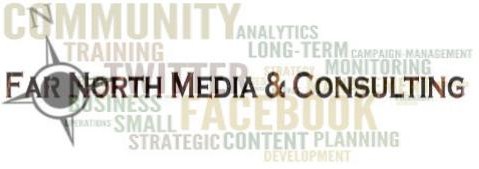LiveScience
Want to stay in your friends' good graces on Facebook? A new study suggests that you should
start by responding to posts on your wall.
The research reveals some of the
unspoken rules of Facebook — the social dos-and-don'ts that keep the site humming more or less happily. Fortunately, most of these rules are pretty simple: Respond to messages, avoid disrespecting people, and don't post
photos that are going to get your friends in trouble with their bosses.
"If
you're trying to project yourself as very professional and you're trying to get a job and your best friend comes on
your page and posts something like, 'Oh what a crazy weekend, I saw you do those five keg stands,' then your friend
has hurt your reputation,'" said study researcher Erin Bryant, a doctoral candidate at Arizona State University.
Many of the "rules" people live by on Facebook are designed to prevent such awkward situations,
Bryant and her Arizona State colleague Jennifer Marmo found in their new study, published online April 25 in the Journal of
Social and Personal Relationships.
Facebook's rules of engagement
It may seem that maintaining a bit of discretion on
Facebook is a no-brainer, but in fact, it's these sorts of unspoken rules that make the social world go 'round. Research
on these so-called "interaction rules" is relatively rare, but studies in the 1980s found that people can articulate
their friendship dos and don'ts when asked. Important friendship rules include standing up for a friend in his or her
absence, sharing confidences, showing trust and support, and volunteering to help in times of need.
In the social network world, however, "friend" can mean anything from your mom to your mom's
second cousin to that guy you met at a party one time. With so many different relationships under the umbrella of "friend,"
Bryant and Marmo were interested in whether real-world friendship rules and Facebook friendship rules would look very much
alike. With 483 million Facebook members around the world checking into the site on a daily basis, Bryant said, the site has clearly become an important part of the social landscape.
Not wanting to impose their own conception of social-networking rules, the researchers set
up focus groups of Arizona State undergraduates to develop their own list. A total of 44 students, ages 19 to 24, participated.
They averaged about 200 Facebook friends each and spent nearly 40 minutes a day, on average, on the site. [Inside Facebook (Infographic)]
The focus groups came up with 36 rules big and small, from "don't post anything that
will hurt a friend's image" to "monitor your photos to make sure they are flattering."
"They were very adamant that you needed to wish people happy birthday," Bryant told LiveScience.
"If it's your close friend, you have to call them or text them, you can't just say it on Facebook. But everyone else, if they're an acquaintance, you should at least
say happy birthday on Facebook."
Friends versus "Facebook friends"
Next, the researchers created a questionnaire to figure
out which of these rules really mattered. They gave the questionnaire to 801 undergraduates, randomly assigning the students
to think of a real-life Facebook "close friend," "casual friend" or "acquaintance." Close friends were defined as someone the student would consider a
best friend, casual friends were defined as a person they would hang out with offline but not consider close, and acquaintances
were people the person had met but did not regularly interact with.
Students
who did not show enough differentiation between these three categories in their friend circle were eliminated, leaving a final
sample of 593 students. The students then completed the survey about whether each of the 36 focus-group rules would apply
to their relationship with the Facebook friend or acquaintance.
The results
revealed that overall, reciprocity was the most important ingredient for a successful Facebook friendship. People generally
agreed that if you post something on a friend's Facebook profile, a response is expected. It was also important to avoid
posting anything disrespectful of a Facebook friend and to consider how posts might affect other people's relationships.
[See the Top 10 Rules of Facebook]
The researchers also found that the closer the friend, the more Facebook communication channels
were open to them; acquaintances wouldn't use the Facebook chat feature, for example. Acquaintance relationships were
understood to be for "passive Facebook stalking," Bryant said.
"Even though I'm letting you see these things [on my profile], I don't expect you to suddenly try to IM
me on Facebook," she said. "It creeps me out if you come post on my wall."
Close friends were also more aware of the need to protect each other's reputations on Facebook. They might
choose to leave a photo unposted if it reflected badly on a close friend, for example, but they were less likely to take such pains for acquaintances.
Interestingly, however, Facebook rules related to maintaining a relationship, such as saying "happy birthday,"
were ranked as most important for acquaintances, but least important for close friends. That's likely because Facebook
is only a portion of any given best-friend relationship, but it may comprise the entirety of an acquaintance relationship,
Bryant said.
"We use it less with [acquaintances], but what we do holds more importance, because it's
one of the few modes of contact we have with them," she said.
The
only category of rules that did not differ by friendship type was the category related to Facebook's role in one's
own reputation. Everyone is careful not to hurt themselves on the site, Bryant said. For example, people were equally likely
to say that they would not post information that could be used against them, regardless of whether it was a friend or an acquaintance
who might consider using that information for evil.
"People are starting to be
aware of all the negatives" that can come with posting on Facebook, Bryant said. "They are aware of it whether it's a close friend, a
casual friend or acquaintance."
New social landscape
Many of the Facebook friendship rules echo real-life
friendship dos and don'ts, Bryant said, especially in the sense that we're supposed to watch our friends' backs
and avoid hurting them. Because college students tend to spend more time on the site than older people, and tend to use it
in a more tell-all capacity, rules might differ slightly among different age groups, she said. [Top 10 Social Networking Sites]
But the study highlights the complications of Facebook's one-on-one interactions in a
public sphere. Many students complained of seeing "emo poetry" from acquaintances in their Facebook Newsfeed, for
example. It seems wrong to read raw emotions from someone you may have had a class with two years ago but barely know, Bryant
said. Other issues come up when in-jokes or pictures of a fun night out get posted publically, perhaps alerting a friend who
was left out of his or her exclusion.
"The public and private component
is something that becomes huge with Facebook," Bryant said. "And that's what gets people in trouble, too."
http://digitallife.today.msnbc.msn.com/_news/2012/05/02/11502858-how-to-avoid-getting-unfriended-on-facebook?lite
Listen to this archived webinar. If you write about social media often, you might find yourself needing a few statistics.
The following sources will give you the most current data available about social networking usage.
Overall
Stats
The following sites are a good place to start for statistics about most of your favorite
social networks.
Wikipedia
Wikipedia is a good first
stop to get the latest stats about social networks. Their pages usually have each social networks launch date, current number
of users, founders, revenue, traffic, and other information as applicable. You can see what I mean on Wikipedia pages for
Facebook, Twitter, YouTube, Google+, and so forth. Be sure to click on the number next to each stat to see the official source for more information.
Quantcast
If you’re looking for traffic and demographics, Quantcast is
a great source. See some interesting information about Facebook, Twitter, YouTube, Pinterest, Google+, and so forth. Use the search box to find even more domains.
The Top 10
Want to know which social networks are the most popular now in the US? Find out on Hitwise. You can also see most popular search engines, search terms, and politicians.


